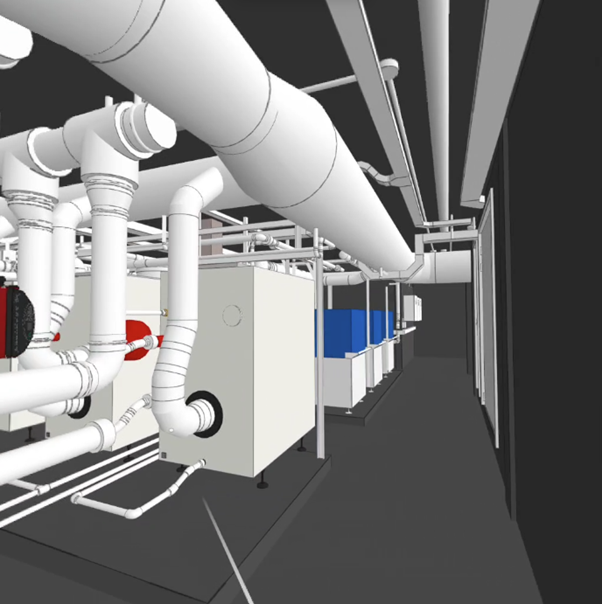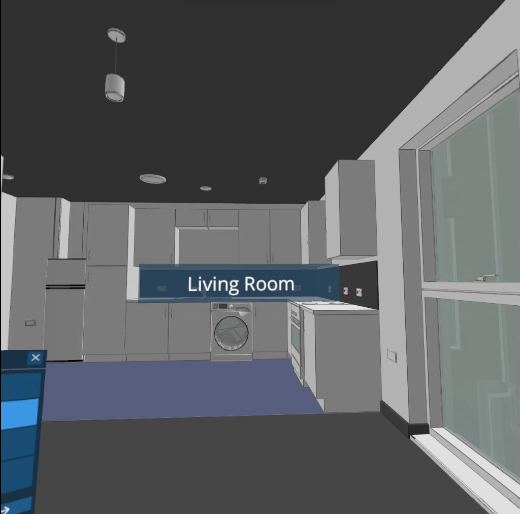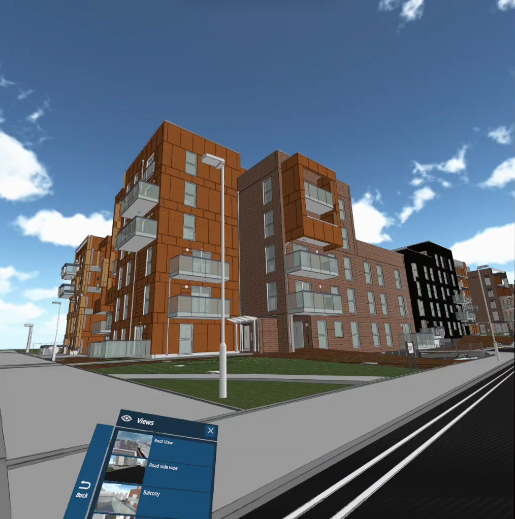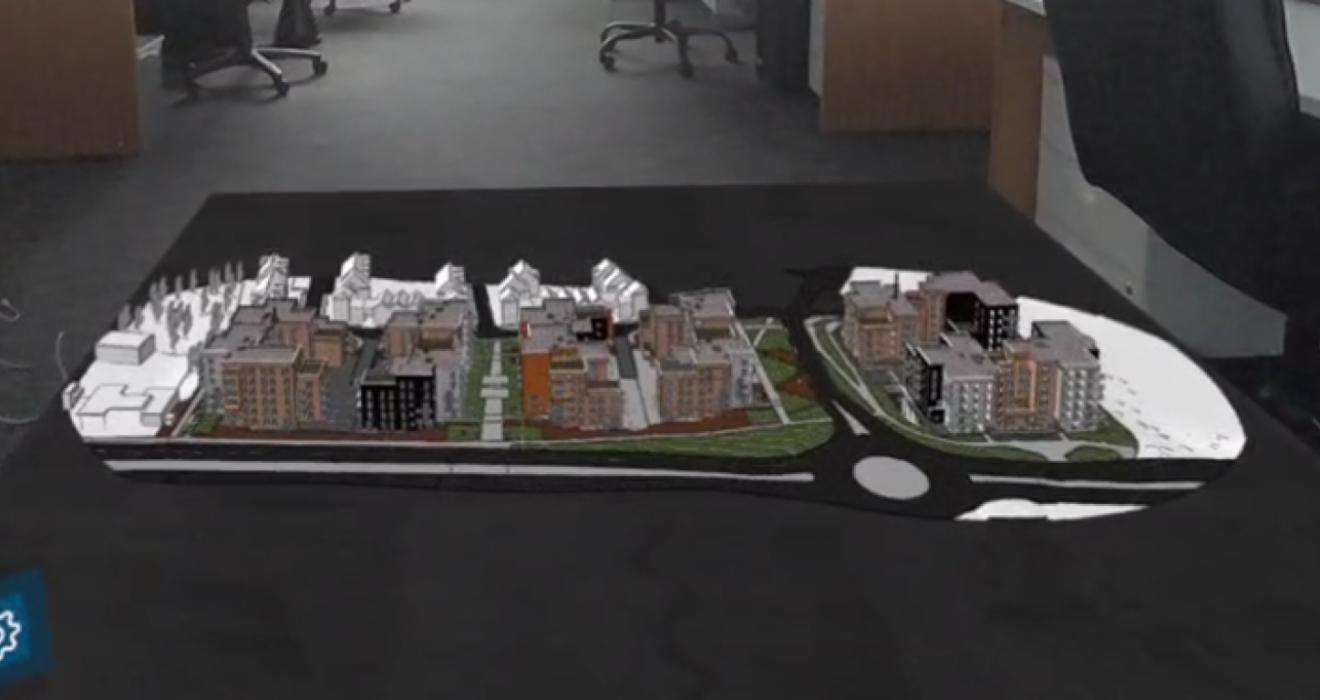Immersive Collaboration: Experiencing Models in VR
Over the past few months, I’ve explored Resolve VR, a standalone platform designed to merge traditional BIM workflows with immersive virtual reality. Resolve is not just a 3D walkthrough tool, it provides a dynamic environment where project teams can inspect, interact with, and evaluate complex models in real time.
The platform supports multi-user sessions, allowing both technical and non-technical stakeholders to experience the same model simultaneously. Users can explore spaces, understand spatial relationships, and identify issues early. Early detection reduces costly construction rework and improves communication between design, engineering, and management teams.
While VR offers an intuitive spatial perspective, Resolve also allows teams to reference 2D visualizations, such as floor plans, elevations, or annotated screenshots. This hybrid approach ensures that design issues are experienced immersively while being cross-checked in traditional plan views, making it easier for less VR-comfortable stakeholders to engage meaningfully.
This dual workflow creates a comprehensive understanding of the project, enabling teams to validate designs, verify constructability, and identify conflicts that might be missed in 2D-only reviews. The combination of immersive 3D visualization and 2D references strengthens the decision-making process, especially for large-scale infrastructure and complex multi-disciplinary projects.

Managing Issues with Precision
Resolve provides a robust annotation and issue management system. Users can track issue status as Active, Resolved, or Void, and classify problems as Accessibility, Safety, or Clash-related. Speech-to-text functionality allows annotations to be captured directly in VR, while instant access to element metadata provides properties, relationships, and system connections.
The platform also supports bookmarking, measuring, and detailed inspection. Integration with ACC, BIM 360, and Procore ensures these annotations propagate across teams, reducing the risk of outdated information or miscommunication.
By combining metadata inspection with visual annotations, teams can make informed, actionable decisions faster. Reviewers can prioritize tasks based on issue severity, classify potential risks, and assign responsibilities to specific stakeholders. These capabilities bridge the gap between design, construction, and management, enabling proactive resolution of issues.

Efficient Handling of Large Models
Resolve is powered by the advanced Wellington render engine, allowing seamless navigation and interaction within large-scale BIM environments. In this instance, the platform efficiently handled 19 federated interdisciplinary models, encompassing over 250,000 elements and 97 Uniclass classifications. Its sectional rendering capability allows users to isolate and inspect areas without performance slowdowns, even in models with complex MEP, structural, and architectural systems.
Navigation features include a section tool to focus on specific areas, predefined views to quickly teleport to critical zones, and teleportation navigation for efficient movement during walkthroughs. This ensures that even highly detailed infrastructure models remain accessible.
The platform allows teams to cross-check elements against floor plans or elevation diagrams, improving accuracy and reducing the chance of oversight. Users can also create specific viewpoints for recurring inspections, which accelerates project reviews and enhances collaboration between different disciplines.

Integration, Cloud Storage, and Permissions
Resolve integrates with platforms such as ACC, BIM 360, and Procore, providing cloud storage, access control, and versioning. Centralized storage ensures that models and updates are accessible from any location. Permissions regulate who can view, edit, or administer models, and versioning tracks all changes for accountability.
These capabilities support collaborative workflows across multiple disciplines and geographic locations. External consultants, contractors, and clients can review models safely without risking data integrity. Version control ensures that every change is auditable and that the latest project data is always available, maintaining transparency and reducing delays.
Additionally, cloud-based integration enables simultaneous work across teams, ensuring that VR sessions, web reviews, and office-based annotations are synchronized. Teams can quickly identify discrepancies and verify the latest updates, reducing manual coordination tasks.
Future-Ready AI and Predictive Insights
Resolve is preparing to integrate AI capabilities to accelerate project review and improve decision-making. Automated issue detection will identify potential clashes and high-risk areas. Smart model optimization allows predictive streaming and adaptive rendering for faster file loading.
Predictive analytics will provide insights into risk assessment, cost impact, and priority recommendations for detected issues. API integration allows connectivity with clash detection tools or other project management systems for targeted review.
AI combined with VR immersion and selective 2D references gives teams both visual intuition and analytical insight. This approach enables rapid prioritization of high-risk areas, improving overall project efficiency and minimizing human error.
Additional AI-driven features under exploration include real-time recommendations during walkthroughs, suggesting corrective actions, and flagging issues that may have downstream impacts. This predictive capacity enhances decision-making and project foresight.
Use Cases and Real-World Applications
Resolve demonstrates value across multiple scenarios. Clash detection workshops benefit from multi-viewer VR sessions that improve understanding of conflicts and reduce miscommunication. Safety and accessibility reviews are accelerated through classification tools and metadata access, enabling verification of regulatory compliance.
Handover-ready documentation allows VR annotations to be exported for downstream reporting. Construction planning is supported through predefined views and teleportation, enabling teams to assess sequencing, logistics, and spatial coordination.
Incorporating 2D plans alongside VR immersion allows cross-checking of spatial insights with plan-based analysis, reinforcing accuracy and completeness. Teams can visualize how different building systems interact in three dimensions while referencing traditional plans to ensure compliance and feasibility.
Resolve has also proven effective in stakeholder engagement, where non-technical participants can understand complex projects intuitively. Visualization in VR helps build consensus, communicate design intent, and gather feedback early, reducing design iterations and ensuring alignment across all parties.
Key Takeaways from our Experience
Using Resolve VR highlighted multiple benefits. Immersive experiences allow stakeholders of all technical levels to engage effectively. Early issue detection reduces surprises and costly rework. Integration with ACC, BIM 360, Procore, and Revizto provides seamless collaboration and ensures access to the latest data.
Cross-platform capabilities between VR and web viewers allow distributed teams to collaborate simultaneously. AI-enabled predictive analytics supports risk prioritization. Large model handling ensures that even the most complex infrastructure projects remain navigable. Optional 2D visualization ensures clarity and accessibility for all participants.
Resolve transforms BIM review into a dynamic, interactive workflow, enabling faster, more informed decisions and improving collaboration between disciplines.
Looking Forward
The future of BIM review lies in integrated VR workflows, AI-driven insights, and selective 2D references. Platforms like Resolve are reshaping how teams identify, analyze, and resolve issues early in design and construction.
By combining immersive VR, predictive AI analytics, cloud integration, and optional 2D visualization, Resolve sets a new standard for collaboration, risk reduction, and proactive decision-making. At Parametrix, Resolve is seen as a catalyst for smarter, faster, and more confident project delivery, empowering teams with both spatial understanding and analytical insight.
Future development possibilities include: enhanced AI-guided walkthroughs, automated clash detection during live sessions, integration with digital twin platforms, and cloud-enabled simulation of construction sequences. These advancements promise to further streamline workflows, enhance safety reviews, and optimize project outcomes.

